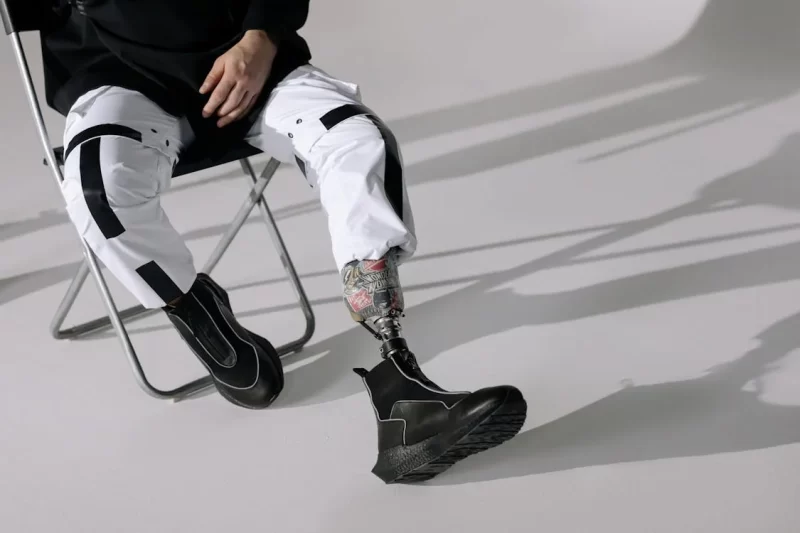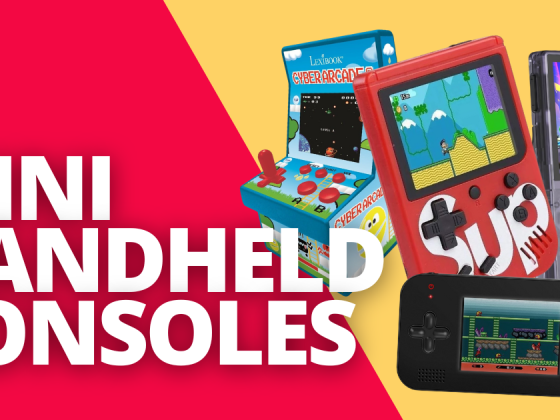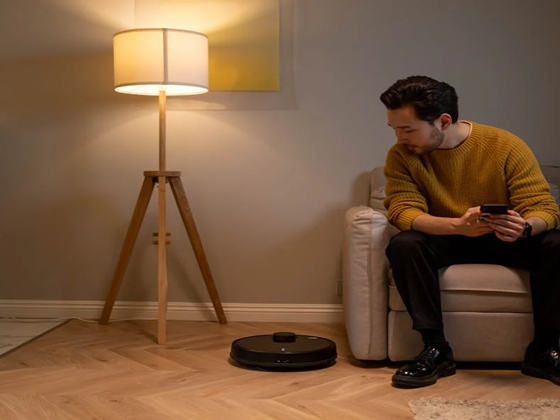La tecnología se ha vuelto esencial para la vida diaria, y para las personas con discapacidad, los avances en tecnología de asistencia son transformadores. Desde mejorar la movilidad y la comunicación hasta simplificar las tareas cotidianas, estas innovaciones empoderan a las personas con mayor independencia y calidad de vida. Con dispositivos como puertas con sensores de movimiento y extremidades robóticas, la tecnología de asistencia rompe barreras y amplía las posibilidades. A continuación, presentamos algunos de los mejores dispositivos de tecnología de asistencia disponibles hoy en día y lo que podría deparar el futuro.
Los 10 Mejores Dispositivos de Tecnología de Asistencia
Los siguientes dispositivos representan algunas de las innovaciones más impactantes en el ámbito de la tecnología de asistencia, ofreciendo mayor libertad y facilidad de uso en diversos entornos:
1. Tabla de Planchar con Cajón
Mantener la ropa sin arrugas aumenta la confianza y la comodidad. La tabla de planchar con cajón está diseñada para personas con dificultad para planchar de pie o que necesitan opciones más accesibles. Este innovador producto permite planchar directamente desde la comodidad de una silla de ruedas, ahorrando espacio y ofreciendo una forma práctica de mantener una apariencia impecable. Se desliza fácilmente del cajón, eliminando la necesidad de una tabla tradicional para planchar de pie, que podría ser más práctica y segura para personas con movilidad reducida. Esto puede ser especialmente útil en espacios reducidos donde ahorrar espacio es crucial, permitiendo un fácil almacenamiento cuando no se usa.
2. Abrepuertas Automático
Los abrepuertas automáticos están equipados con sensores de movimiento, lo que permite que las puertas se abran en cuanto detectan movimiento. Estos sistemas son especialmente beneficiosos para personas con movilidad reducida, ya que les permiten entrar y salir de las habitaciones sin tener que usar las manos, sin tener que lidiar con puertas pesadas. Muchos propietarios han adoptado esta tecnología para crear espacios más accesibles, garantizando una fácil navegación por la casa. Además del uso residencial, estos abridores se suelen instalar en edificios públicos, facilitando el acceso a lugares de trabajo, centros comerciales y centros sanitarios para todos los visitantes. Gracias a la opción de control remoto e integración con hogares inteligentes, los usuarios pueden personalizar la configuración de las puertas para una mayor comodidad.
3. Cubos de basura extraíbles
Al igual que las puertas automáticas, los cubos de basura extraíbles utilizan tecnología táctil, lo que facilita la eliminación de residuos. Ubicados debajo de la encimera de la cocina, estos cubos se abren con un suave toque de la rodilla o el pie, lo que facilita que las personas con movilidad reducida puedan realizar las tareas diarias de forma independiente. Esta tecnología es especialmente útil para quienes tienen dificultad para doblar o levantar la tapa de un cubo de basura tradicional. Su diseño garantiza que la cocina se mantenga ordenada sin necesidad de movimientos bruscos. Además, se integra a la perfección con los diseños de cocinas modernas, aportando funcionalidad y una apariencia elegante a cualquier hogar.
4. Rampas enrollables
Subir escaleras puede ser un gran desafío para las personas en silla de ruedas. Las rampas enrollables son una solución portátil y versátil, que facilita el acceso a escaleras pequeñas o superficies irregulares. Están disponibles en varias longitudes y se pueden enrollar para facilitar su almacenamiento y transporte, lo que las convierte en una opción práctica tanto para el hogar como para viajes. Las rampas enrollables son ideales para instalaciones temporales, como para visitar a un amigo o acceder a un local sin rampa permanente. Su diseño ligero y fácil instalación las hacen populares entre quienes buscan una solución flexible para una mejor accesibilidad en diversos entornos.
5. Fregador de pies
Mantener la higiene puede ser un desafío para las personas con movilidad reducida, especialmente en zonas de difícil acceso como los pies. Un fregador de pies es una solución sencilla pero eficaz que se puede colocar en el suelo del baño. Los usuarios pueden frotar sus pies suavemente contra la superficie texturizada, garantizando una limpieza profunda sin necesidad de agacharse ni estirarse. Esto hace que la ducha sea más fácil y segura, reduciendo el riesgo de resbalones o caídas al intentar alcanzar algo. Es un complemento económico y accesible para cualquier baño, que ayuda a mantener la limpieza y la independencia en las rutinas de cuidado personal.
6. Dispositivo de entrada digital
Escribir en teclados tradicionales puede ser difícil para personas con movilidad limitada en las manos. Los dispositivos de entrada digital ofrecen una solución manos libres, permitiendo a los usuarios escribir o controlar dispositivos electrónicos con el mínimo esfuerzo. Estos dispositivos portátiles se ajustan cómodamente a los dedos y utilizan sensores para detectar movimientos, lo que los hace ideales para entornos domésticos y profesionales. Son especialmente útiles para personas con afecciones como artritis o lesiones de médula espinal, permitiéndoles mantenerse productivos sin molestias. La flexibilidad de estos dispositivos los hace compatibles con una variedad de dispositivos, desde computadoras hasta teléfonos inteligentes, ofreciendo opciones versátiles para la comunicación y el trabajo.
7. Peladores de Naranjas y Limones
Pelar frutas como las naranjas puede ser complicado para personas con poca destreza. Los peladores eléctricos simplifican esta tarea, permitiendo a los usuarios colocar la fruta en el dispositivo y pelarla automáticamente en segundos. Esta herramienta es especialmente útil para quienes desean mantener una dieta saludable sin la frustración de pelar manualmente. Con un diseño pequeño y compacto, los peladores eléctricos caben en cualquier cocina y requieren una instalación mínima. Son perfectos para preparar refrigerios rápidos o añadir cítricos frescos a las comidas, ayudando a los usuarios a mantener un estilo de vida nutritivo sin esfuerzo.
8. Carriola Adaptada para Sillas de Ruedas
Para los padres con movilidad reducida, las carriolas adaptadas para sillas de ruedas ofrecen una forma segura de desplazarse con sus hijos. Estas carriolas se acoplan a la silla de ruedas, lo que permite a los padres disfrutar de actividades al aire libre con sus pequeños. Vienen en varios diseños, incluyendo portabebés y carriolas de compras, ofreciendo versatilidad para diferentes necesidades. El diseño garantiza un paseo suave tanto para padres como para niños, con características de seguridad como arneses seguros y ajustes de estabilidad. Esta innovación favorece la movilidad y fortalece el vínculo entre padres e hijos permitiéndoles participar juntos en salidas cotidianas.
9. Teléfonos inteligentes braille
Los teléfonos inteligentes braille representan un avance significativo en la tecnología de la comunicación para personas con discapacidad visual. Estos dispositivos cuentan con pantallas braille táctiles que permiten a los usuarios leer mensajes y navegar por las aplicaciones de forma independiente. Con funciones como comandos de voz y lectores de pantalla, estos teléfonos inteligentes acortan la distancia de comunicación y facilitan la conexión entre personas con discapacidad visual. La retroalimentación táctil y las señales de audio proporcionan una experiencia fluida, garantizando que los usuarios puedan acceder a las mismas funciones que una persona vidente. Con la creciente compatibilidad de aplicaciones, estos dispositivos se están convirtiendo en una parte integral de la vida diaria de las personas con pérdida de visión.
10. Brazos y piernas robóticos
La tecnología protésica ha avanzado para incluir brazos y piernas robóticos, que imitan fielmente el movimiento y la función de las extremidades naturales. Estos dispositivos utilizan sensores e inteligencia artificial para detectar y responder a las señales musculares, lo que permite un control preciso. Si bien pueden ser costosos, las extremidades robóticas representan un paso significativo hacia la mejora de la movilidad y la independencia de las personas con amputaciones. Con características avanzadas como fuerza de agarre adaptable y mejor soporte de equilibrio, las prótesis robóticas pueden mejorar significativamente la calidad de vida de sus usuarios. Si bien la tecnología aún está en evolución, la investigación continua hace que estos dispositivos sean más accesibles y asequibles para un mayor número de personas.

El futuro de la tecnología de asistencia
Con la mirada puesta en el futuro, la tecnología de asistencia continúa evolucionando, volviéndose más personalizada y accesible. Diversas tendencias están cambiando el panorama, haciendo que estos dispositivos sean aún más fáciles de usar e integrados en la vida cotidiana:
1. Dispositivos con IA
La Inteligencia Artificial (IA) se ha convertido en un pilar fundamental de muchos dispositivos de asistencia, permitiendo interacciones más ágiles e intuitivas. Por ejemplo, los asistentes domésticos controlados por voz, como Amazon Echo y Google Nest, permiten a los usuarios controlar la iluminación, ajustar termostatos e incluso realizar llamadas telefónicas mediante sencillos comandos de voz. La integración de la IA en las tareas cotidianas ha hecho que los hogares sean más inteligentes y cómodos para las personas con discapacidad.
2. Tecnología Wearable
Los wearables, como las gafas y los relojes inteligentes, también están mejorando la vida de las personas con discapacidad. Las gafas inteligentes pueden convertir texto en voz, lo que permite a los usuarios con discapacidad visual leer letreros, menús y libros. Por otro lado, los monitores de ECG wearables ayudan a controlar la frecuencia cardíaca y otros signos vitales, proporcionando un control de salud en tiempo real para personas con afecciones médicas. Estos wearables están diseñados para la comodidad, garantizando que los usuarios puedan acceder a información esencial sin necesidad de equipos voluminosos.
3. Realidad Virtual (RV) para Terapia y Rehabilitación
La realidad virtual es cada vez más terapéutica para las personas con discapacidades físicas y cognitivas. Los programas de RV pueden simular entornos reales, ayudando a los usuarios a practicar habilidades motoras o a desenvolverse en situaciones sociales en un espacio controlado. Para las personas en rehabilitación, la RV ofrece una forma motivadora y atractiva de realizar ejercicios, haciendo que el proceso de recuperación sea más agradable. Esta tendencia emergente demuestra el potencial de la tecnología para transformar la forma en que abordamos la recuperación y la adaptación de las personas con discapacidad.
4. Impresión 3D para Prótesis Personalizadas
Gracias a la impresión 3D, ahora es posible producir prótesis personalizadas a un costo mucho menor que con los métodos tradicionales. Estas prótesis impresas se pueden adaptar a la perfección al usuario, brindando comodidad y una mayor funcionalidad. Esta tecnología ha abierto nuevas oportunidades para crear soluciones asequibles, especialmente en regiones desatendidas con acceso limitado a prótesis estándar.
5. Diseño Inclusivo en la Tecnología Convencional
Más allá de los dispositivos especializados, existe un movimiento creciente hacia el diseño inclusivo en la tecnología convencional. Gigantes tecnológicos como Apple y Microsoft han integrado funciones de accesibilidad en sus productos, como lectores de pantalla con voz en off, herramientas de ampliación y controladores adaptativos para videojuegos. Este cambio hacia la inclusividad garantiza que las personas con discapacidad puedan acceder a la misma tecnología que el resto, reduciendo barreras y promoviendo la igualdad en la era digital.
El impacto de los mejores dispositivos de tecnología de asistencia
La tecnología de asistencia ha avanzado enormemente en los últimos años, ofreciendo una gama de dispositivos que facilitan las tareas cotidianas de las personas con discapacidad. Desde prótesis robóticas hasta asistentes domésticos con inteligencia artificial, estas innovaciones impactan profundamente en la calidad de vida, permitiendo a las personas vivir con mayor independencia y confianza. A medida que la tecnología avanza, es crucial priorizar la accesibilidad y garantizar que los nuevos desarrollos se diseñen de forma inclusiva. Adoptar estas herramientas contribuye a construir un mundo más equitativo donde todos tengan la oportunidad de prosperar.






